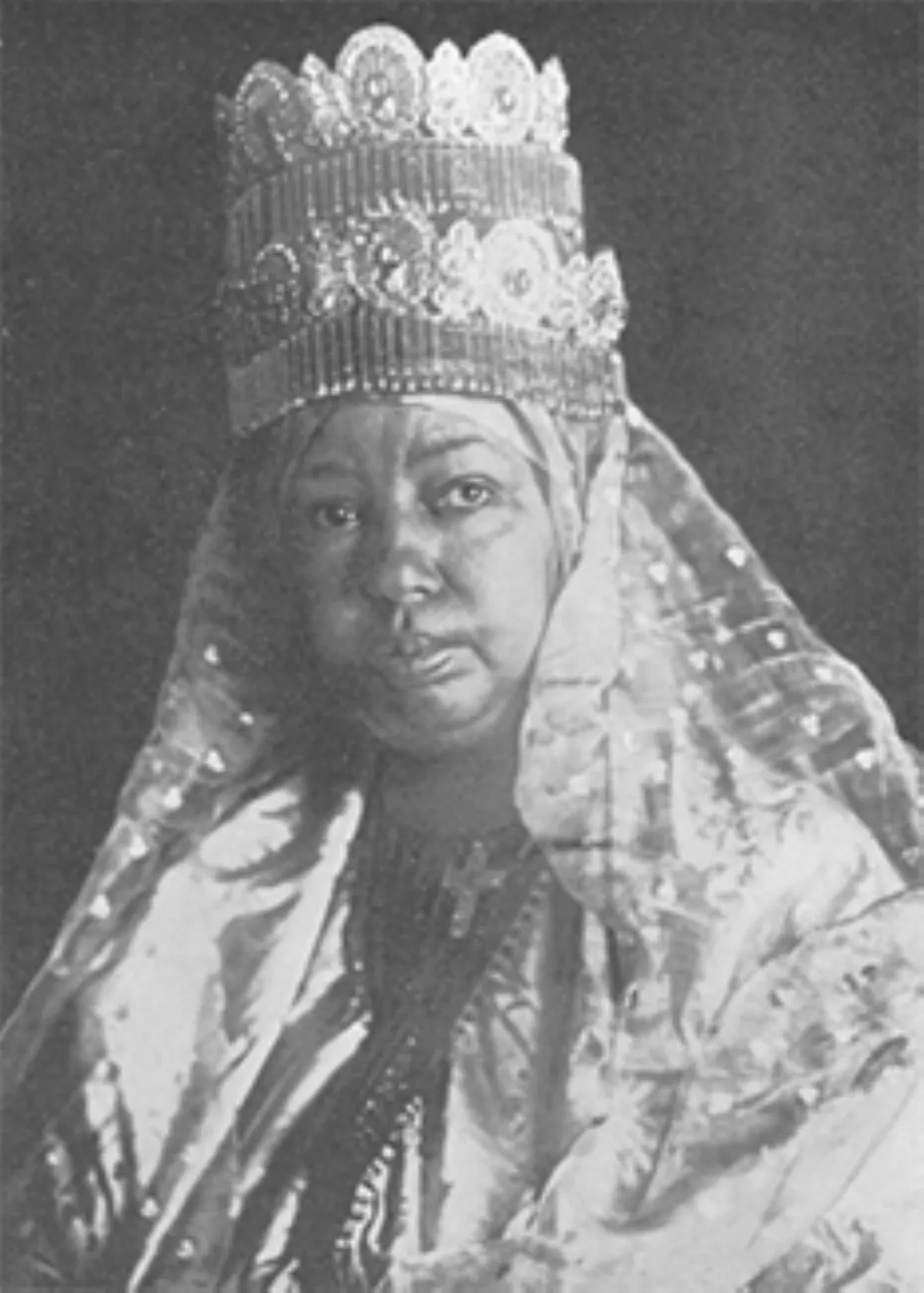 1.
1. Taytu Betul was Empress of Ethiopia from 1889 to 1913 and the third wife of Emperor Menelik II.

Empress Taytu Betul was known to play the begena, which is a 10-string instrument.
Taytu Betul governed Simien, where his children Wube, Betul and Merso were born.
Taytu Betul is acknowledged to have wielded considerable political power both before and after she and Menelik were crowned Emperor and Empress in 1889.
Taytu Betul led the conservative faction at court that resisted the modernists and progressives who wanted to develop Ethiopia along western lines and bring modernity to the country.
Empress Taytu Betul was the first to motivate the hesitant Emperor and other men to stand up against the Italians.
Menelik II and Taytu Betul were temporarily in possession of 4,000 prisoners of war.
When Menelik's health began to decline around 1906, Taytu Betul began to make decisions on his behalf, angering her rivals for power through her appointment of favorites and relatives to most of the positions of power and influence.
Taytu Betul was widely resented for her alleged Gonderine xenophobia and nepotism, and the nobility of Shoa and Tigray, along with the Wollo relatives of Lij Iyasu conspired to remove her from state responsibility.
Taytu Betul was banished to the old Palace at Entoto, next to the St Mary's church she had founded years before, and where her husband had been crowned Emperor.
Zauditu, Menelik II's daughter by yet another previous marriage, had always been close to Empress Taytu Betul and invited Taytu Betul to live with her.
Taytu Betul lived out the next few years at the old palace next to the Entoto Maryam Church overlooking Addis Ababa.
Taytu Betul requested permission to go to Gondar in November 1917 to end her days, but was refused; she died three months later.
Taytu Betul is buried next to her husband at the Taeka Negest Ba'eta Le Mariam Monastery in Addis Ababa.